I lived in Paris for three months and during this time I managed to redefine my mojo to a pseudo-local Parisian. I would confidently strut to the cafe with its striped awning on the corner every morning. Ok, the little dog was missing from this promenade of mine. Stylishly dressed, albeit in casual black, giving off an elegant vibe. I quickly learned that dodging dog poo on the sidewalks is a fine art form that can turn into a bit of dance along the way. And that you won’t get a gracious good morning smile from the dapper waiter unless you have learned how to utter ‘bonjour’ correctly. For those like me who have linguistic challenges, practicing the shoulder shrug while putting your head on the side and raising your eyebrows (known as the Gallic shrug) was an invaluable tool in my armory when strangers would attempt to chat with me. My limited school-girl French was definitely not up to Parisian par.
Paris represented everything I was interested in, from history to art, food and wine, with the odd penchant for drooling over fashion labels. I watched movies such as ‘Amélie,’ a romantic comedy, and Woody Allen’s masterpiece, “Midnight in Paris.” I turned the volume to high when binging on Anthony Bourdain’s ‘No Reservations, Paris – Why the French Don’t Suck.’ And I daydreamed of scoffing mouthfuls of a decadent chocolate choux pastry éclair with its dripping custard. Michelin-star restaurants, sexy chefs, oozy cheeses, and fluffy omelets washed down with numerous gulps of Vintage Perrier-Jouët Belle Époque Champagne consumed my thoughts. The fact that the French people don’t appear to get fat was a bonus in my mind.
I learned very quickly how to drink according to the time of day. A shot of caffeine, or even hot chocolate, is acceptable in the mornings. Sipping aniseed-flavored ‘pastis’ is the pre-dinner apéritif to indulge in. A glass or two of wine with a meal and for the adventurous soul languishing in a quaint bar wishing to chase green fairies, absinthe is a treat you won’t forget in a hurry.
I have listed the places that I consider my ultimate nooks, crannies, and boltholes of Paris, plus of course, what some consider to be the definitive ‘must do’ sights.

The Iconic Landmark: Of Course the Eiffel Tower
The ultimate French symbol, climbing the Eiffel Tower is for anyone with plenty of time to stand in a long winding queue. Preferably with a packed lunch to satisfy the hunger pangs, as shuffling feet take hours to creep through a maze of security checkpoints. Time was no problem for me; I patiently waited hour after hour just to get to the top of the tower with only a bottle of water to sip on.
You can take the lazy route of the elevator to the 2nd floor, but if you like to experience a bit of pain, the steps—674 in total—are the way to go. Then you can jump into the lift on the 2nd floor to get to the top. If the wallet will take it, splurge on a glass of champers at the top. And if you are totally flush with cash, book into the flashy gastronomic restaurant ‘Le Jules Verne.’ This will entitle you to the bonus of surging from the bottom to the top in the VIP elevator. Or, you can skip the queue and take an organized tour with prices starting from €45 per person.
Short on time or cash? Stand back and gaze at this masterpiece from afar and marvel that when it was completed in 1889 it was the first man-made structure over 324 meters tall.
Late at night was my favorite time to gaze at the fairytale vision of cascading dancing lights strung from its girders.
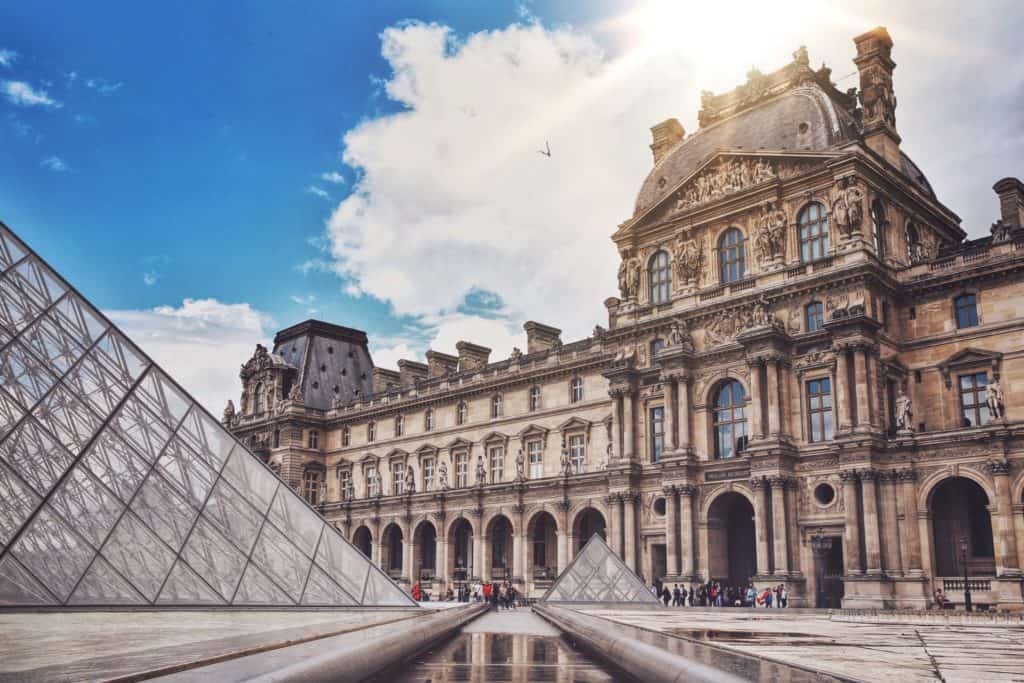
Meander Through the Louvre Museum
The world’s largest art museum, The Louvre was once home to French kings. I spent hours haunting its halls of art treasures that I had previously only studied in art at secondary school. Desperate art lovers like myself get to the Louvre long before its doors open in the mornings at 9am to beat the queue and happily hand over the entrance fee of €17. Or, go online and book your tickets. Other options are available for a price to get you to the front of the line no matter the time of your visit. Guided and audio tours begin at €41.
I feel you haven’t been to Paris until you have stared upon the prized Mona Lisa painting that will send tingles down your back. Her eyes really do follow you. The Winged Victory and the Venus de Milo are also up there with the most gaped-at treasures. The museum is massive, and if you have no sense of direction like me, you will get lost, but it doesn’t matter; eventually, you will find an exit.
A visit to the Louvre Museum can be overwhelming. Your mind might do a little bit of a whirl of confusion; where to go and what to see. Download a museum map and mark out the most important works you wish to see, especially if all you have is one day here. If you are lucky enough to be in Paris for a while, you might end up like me in that a weekly visit became my normal.

If the queue is too long at the Louvre…
Art lovers that are queue-adverse should instead take a stroll to one, two, or three of the other art hubs in Paris.
The Musee d’Orsay is where you can feast your eyes on the most extensive collection of Impressionist art in the world. It houses a distinguished list of painters’ works—Manet, Degas, Renoir, Gaugin, Monet, and plenty more of the masters. The building was once an old train station so that in itself is a visual sight to behold.
The Pompidou Centre within a building resembling a plumbers’ dreamscape—all of its pipes and plumbing decorate the outside of the property in a diverse array of dynamic and vibrant colors—overflows with modern art and holds numerous significant exhibitions. Upon its opening in 1977, the building was described as ‘an architectural King Kong.’ Unfortunately, it will close from 2023 for four years of major renovations.
The Musée Picasso displays over 5,000 works and archival items. Home to the world’s biggest collection of Picasso’s work, it’s a journey through the artist’s life as a painter. Picasso, the Spaniard, was one of the most important influencers on 20th-century art with plenty of both critics and fans. He is considered to be the father of the art movement known as ‘cubism.’
The streets of Paris are sprinkled with delights for art lovers. There are alternatives to being elbowed out of the way or having some stranger breathing down your neck.
Musée de l’Orangerie in the Tuileries Gardens and the Musée Marmottan showcase Monet’s creations. While the Musée Rodin is where you can mimic the pose of his famous ‘Thinker’ statue amongst more than 6,000 other pieces of his works.
My special place where it was about the art and the surroundings was the Musée Rodin for its dreamy rose gardens and outdoor cafe.

Clamber up the steps of the Arc de Triomphe
Another important monument that requires you to stare in awe at; the Arc de Triomphe is a triumphal arch dedicated by Napoleon to his troops of the Austerlitz battle in 1809. It took 30 years to complete (which was not in Napoleon’s lifetime). When you study this ceremonial creation, you can understand why. My imagination was captured when I glanced at this massive structure littered with generals’ names and reliefs, such as that of Napoleon looking like a Roman emperor.
The Arc de Triomphe is the real heart of France, having witnessed Paris’ most tragic and triumphant events. It bore the swastika of the Nazi occupation of Paris during WWII and the city’s liberation under Charles de Gaulle in 1944 when troops marched beneath the arch. Today the Bastille Day Military Parade starts at the Arc de Triomphe and it is finishing spot for the famous bicycle race, the Tour de France.
I chose to climb the 280 steps and pay €13 for the pleasure of stretching my calf muscles. The view of Paris from the top rivals that of the Eiffel Tower. If you don’t like pain, then meander around the arc’s base, ensuring that you look up when under the central arch. It’s a mammoth testament to lives lost, historical battles fought, and the glories of the French people.

Take a Day Trip to Versailles
Don’t go to Versailles unless you are in Paris for several days. It takes at least an hour to get there from the city hub fighting traffic all the way, or dare I say, suffering from claustrophobia on the packed train.
And don’t contemplate seeing everything in one day, as it’s impossible. Decide what is most important to you: architectural wonders such as the Grand Trianon where kings would wine and dine, the fairytale building known as the Royal Opera of Versailles that can accommodate 1,200 spectators at performances, the baroque-style Versailles Cathedral, the Royal Chapel smothered in marble flooring and dressed with incredible artworks or the Hall of Mirrors where over 350 mirrors reflect the gold and crystal used in the decoration. Then there’s the Notre-Dame de Versailles, classified as a historical monument where all the French royal family’s marriages, births, and deaths were once registered. Take your pick if you are hampered by little time.
The gardens of Versailles simply take your breath away. After I had overdosed on history, I headed to the Petit Trianon located in the park of the Grand Trianon for some quiet musings. It was here that Marie Antoinette would run to when she had had enough of public responsibilities. I even wondered what the gardens would have looked like with elegant French women of that era strolling around in their full skirts over rounded hoops while carrying parasols.
What I especially loved was poking my nose around the Versailles’ Markets, where you can gorge on brioche or even frog’s legs if you are so inclined.
As with other in-demand tourist locations, the entry fees vary according to what you wish to do and see. Prices and tours vary enormously from €18.

Stroll Through Père Lachaise Cemetery
Take time out to revere some famous figures laid to rest in the most visited cemetery in the world, the Père Lachaise Cemetery located in the 20th arrondissement. Jim Morrison, Marcel Proust, Edith Piaf, Chopin, Proust and Oscar Wilde, to name a few VIPs, are buried here. If a cemetery can be called ‘romantic,’ then this is the one. Established in 1804, it was the first “garden” cemetery in Paris. Picturesque cobblestone pathways curve around 44 hectares lined with old gnarly chestnut trees and exquisite statues plus tombs. About 70,000 burial plots, from burial chambers to gothic-style graves and ancient mausoleums, represent Paris’s social, political, and cultural history.
You can join a tour if you want the full rundown on who is buried where from €19, alternatively do as I do and grab a map at the entrance and explore on your own. Then be a bit sneaky and head to where a tour group is dithering. There’s bound to be the grave of a famous person.
I love this serene escape from the hustle and bustle of the streets of Paris.

The Catacombs Will Fulfil Your Dark Tourism Needs
I scared myself witless, stumbling alone through the dimly lit Catacombs with its macabre passageways decorated with thousands of skulls and human bones. Who would have thought that Paris, known as the ‘City of Lights’, would have such a dark secret hiding below its streets? Known as the largest grave in the world, the Catacombs hold the bones of more than six million Parisians. Artfully arranged in a tunnel network, it’s hard to get your brain around the fact that the yellowed bones were once living people. It’s definitely bringing history to life through a very different looking-glass.
The queue to walk amongst the dead is always long, as only 200 people are permitted inside at any one time. So think about 3 hours of standing and watching the passing parade on the street to keep yourself occupied. To avoid this, either get there early (the doors open at 10am) or go in the evening (doors close at 8.30pm).
Alternatively, book online and bypass the queue altogether by paying approximately €29. There are pricier small group tours available if you have no wish to be alone as I was in the spooky atmosphere.
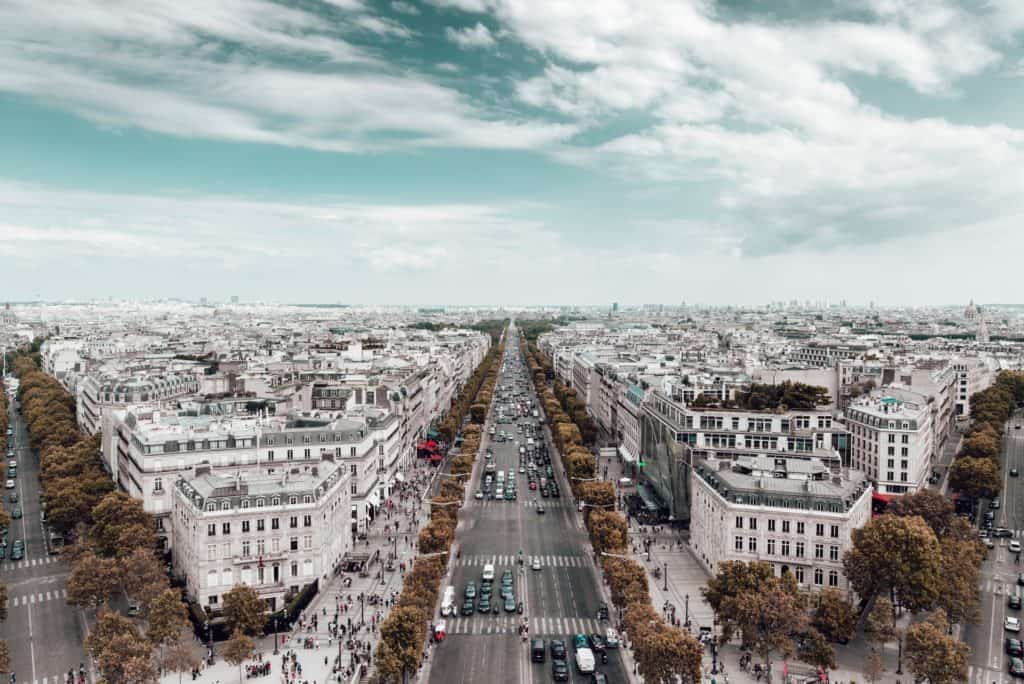
You Must Visit Champs-Elysees
One of the most touristy things you will do in Paris—but so de rigueur that you have to do it at least once—walk the length of the Champs-Elysees from the Arc de Triomphe to the Place de la Concorde. Sadly, it’s a shadow of its former magnificence as the world’s most beautiful avenue; but it’s still pretty special. Unfortunately, the locals believe that it’s deteriorated from its glory days. Today, it’s a plethora of fast food venues outdoing the luxury brand shops vying for the attention of label addicts. Theatres and exhibition venues abound, and there’s usually a festival of some sort or another happening.
Plans are afoot to soon give this grand old dame a makeover, turning roads into green areas and pedestrian walkways. Cars are banned along its nearly two-kilometer length on the first Sunday of each month. If walking isn’t your thing, hire a bicycle and ride its length, have a picnic along the way, thrash a credit card in a top-end shop or purely gaze at the monuments.
It’s hard to comprehend that this famous avenue was once an untamed swamp with the odd bedraggled kitchen garden. It was originally designed in the 17th century and later landscaped by the Frenchman, André Le Nôtre. Named after the mythical Greek paradise, the Elysian Fields, a double row of elm trees lined a wide promenade.
Watch out for pickpockets amongst the bustling tourists; about 300,000 people visit every day, including bag snatchers.
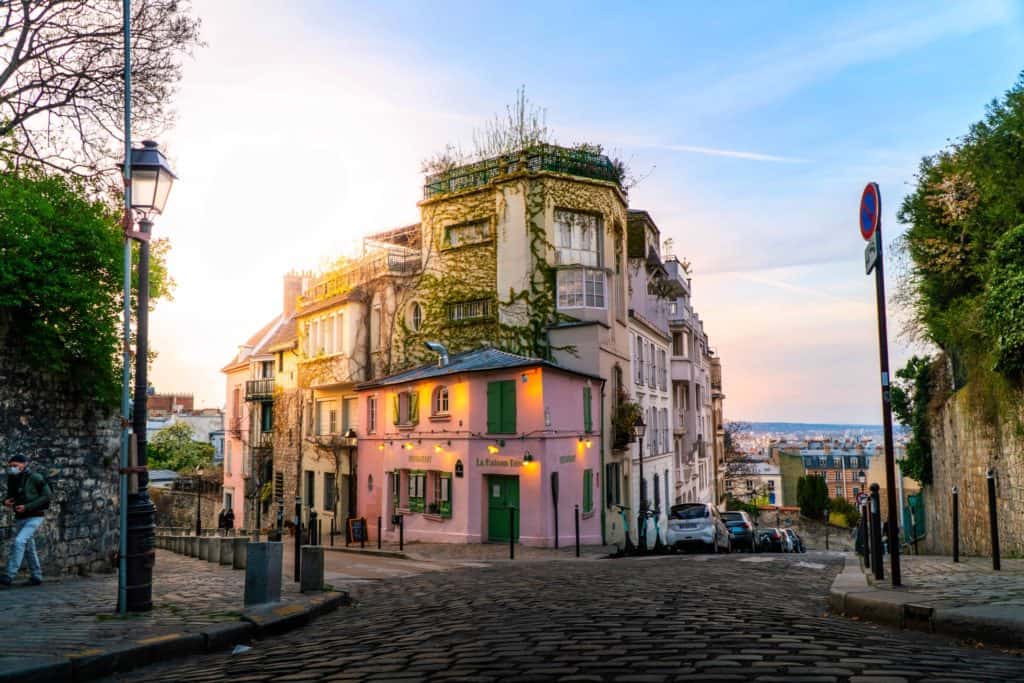
Spend a day at Montmartre
Montmartre was my unforgettable haunt when I wanted to hang out with the tourists, university students and eccentric locals. Cluttered and chaotic, Montmartre has a veritable list of sights to see in winding cobblestone hilly streets of intrigue and history. The whimsical ‘Love Wall’ of amorous hand-written laments brands a wall in the Square Jean Rictus. The quirky bronze sculpture of the character imbued with superpowers, Dutilleul, in the book of Marcel Aymé’s ‘Le Passe-Muraille,‘ (the Passer Through Walls) bursts from a wall at the passing parade of tourists. The Place du Tertre, where artists hang out painting portraits. A gorgeous plaza cuddled by 18th-century buildings decorated with wrought-iron balconies and wooden shutters is the beating heart of the village. Take the time to check out what is possibly the smallest historic vineyard in the world, Vignes du Clos.
Rue Novins, the bustling hub of the old road into Paris where carts once clattered over cobblestones, is a hive of cafes and patisseries infusing the air in a haze of rich buttery aromas. The old carousel sitting at the bottom of the 100m staircase, as you make your way down from the white dome of Sacre Coeur, is the longest set of steps in Montmartre. The Instagram-famous facade of the quaint Le Consulatcafé is where you can walk in the shoes of Vincent Van Gogh and his avant-garde arty friends. You can tantalise your tastebuds with the velvety texture of a crème bruléeafter cracking its torched toffee top with a spoon at Café des Deux Moulins.
Cabarets flourished when Moulin Rouge was founded in 1889, giving birth to the raucous French cancan. You can get a taste of the rowdy and bohemian flair of a show at Moulin Rouge and find the sensual side of Parisian life. Prices start from €89.

Surround Yourself With Greenery at the Jardin des Plantes
One for the green thumbs who find themselves overwhelmed by the concrete city jungle—Jardin des Plantes was Paris’ first botanic gardens, founded by Louis VIII in 1626. It’s a fantastic collection of international exotic specimens and medicinal plants. Originally named the ‘King’s Garden,’ there are over 22,500 varietals planted in the different gardens: the rose garden, peony garden, the alpine garden, and the Art Deco winter garden. The massive Belle Époque greenhouses—one from the 1800s that’s an outstanding example of the architecture of the time, are today classified as historical monuments of Paris.
Covering 28 hectares, Jardin des Plantes also has a herbarium where you will find over 6 million dried reference specimens, a botanical library, the amazing Muséum Nationale d’Histoire Naturelle and its famous Gallery of Evolution as well as the Galerie de Minéralogie et de Géologie. For the kids, there’s an old-fashioned small zoo that’s the second oldest in the world. During the French Revolution, it became home to the foreign animal pets once kept by now decapitated French royals on their estates. This was the beginning of the zoo.
My alone time here was spent strolling along shaded paths peeking at colorful flower beds. Afterward, heading to the Grande Mosquée de Paris to savor sweet mint tea and relish a drool-worthy pastry while sitting on the mosaic terraces.
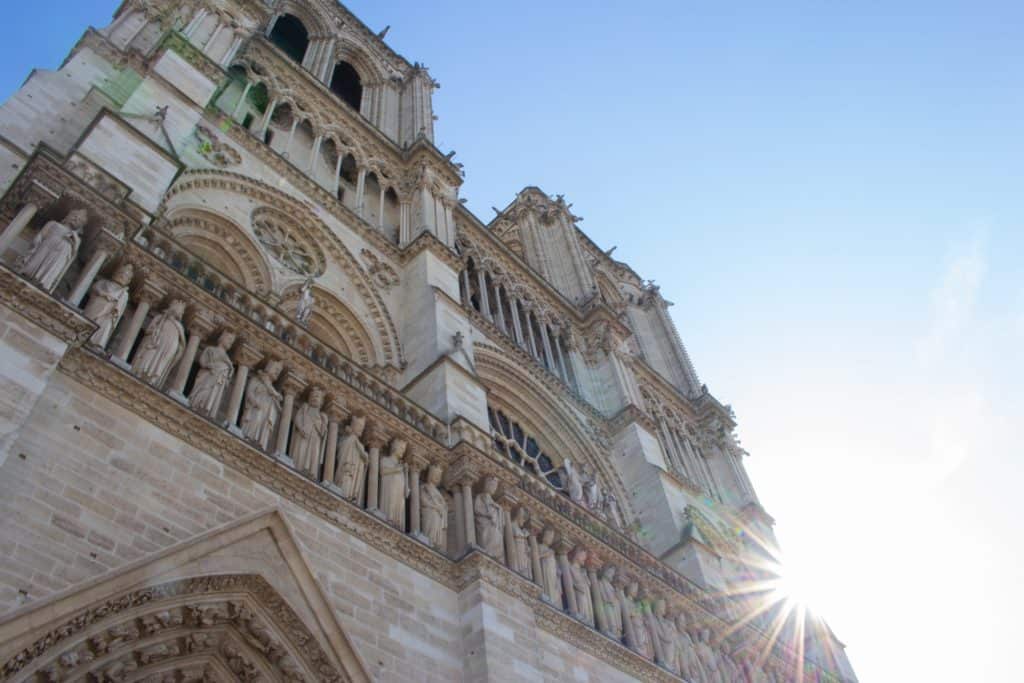
Watch the Rebuilding of Notre-Dame
One of the oldest and most grand Gothic cathedrals in the world, on the 15th April 2019, Notre Dame was ablaze with flames. I am generally not one for churches, but Notre Dame held a special place in my heart. With its incredible stained glass windows, the massive and imposing height of 69 meters, and beautiful nave, there’s no wonder that it was the most visited site in Paris. I always used it as my homing landmark—so long as I could find my way back to its towering chimeras and gargoyles; I never got lost in Paris.
Located in the very heart of Paris, it’s been standing since the 12th century overlooking Île de la Cité (City Island). Notre Dame means ‘Our Lady of Paris.’ Currently, it is undergoing a mammoth renovation with hopes that it will be completed by July 2024, when the city will host the 2024 Summer Olympics. About 200 construction workers toil away on the site every day.
After taking the time to marvel at the laborers scurrying over scaffolding, head to Sainte Chapelle, another stunning cathedral with over a thousand stained-glass windows depicting scenes from the Old and New Testament. It’s only a five-minute walk away from Notre Dame. Right next door to Sainte Chapelle is the Gothic building named The Conciergerie. Once a medieval palace transformed into prison cells during the French Revolution, it’s where Marie-Antoinette was imprisoned before her execution.
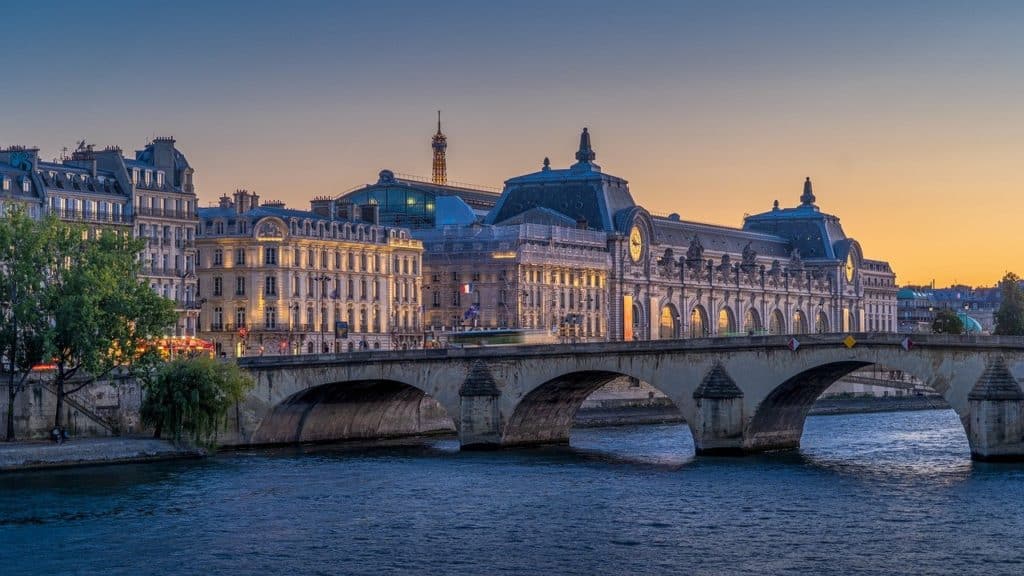
Stop at the Bouquinistes and Zig Zag Across the Seine’s Magical Bridges
This is an excellent walk along the River Seine that won’t give you blisters on your heels.
If you found Sainte Chapelle, you will quickly locate the UNESCO World Heritage site of the booksellers of Paris. Perched on both sides of the river, you will see almost 2 kilometers of about 900 green boxes that have been in situ since the 16th century. Used and specialist antiquarian books of all kinds, magazines and artwork, overflow from these strictly controlled mini bookshops that literally hang over the Seine. It’s a quirky sight. Typical French characters, some with jauntily placed berets on their heads, tend the shops of literary treasures from sunrise to sunset, all too ready to give a passerby a big grin.
Head north along the river pathway to Pont Neuf, the oldest bridge in Paris that connects the Right Bank with Ile de la Cite where it’s possible to see the Eiffel Tower. Once, the bridge was smothered in various metal locks placed there as a romantic gesture by lovers. Today it’s forbidden. The next bridge is where the Pont des Arts can be found, linking the square of the Palais du Louvre and the Institut de France.
About a thirty-minute stroll north along the riverside will place you at the picturesque Pont Alexandre III, which will take you to the Grand Palais. This bridge literally stole my heart for its sheer pomp, fantasy, and picture-perfect depiction of unbridled Parisian city wealth. A masterpiece of steel architecture: cupids dance beneath candelabra, nymphs of the river play, and the gold brilliance of Pegasus dominates this remarkable landmark.
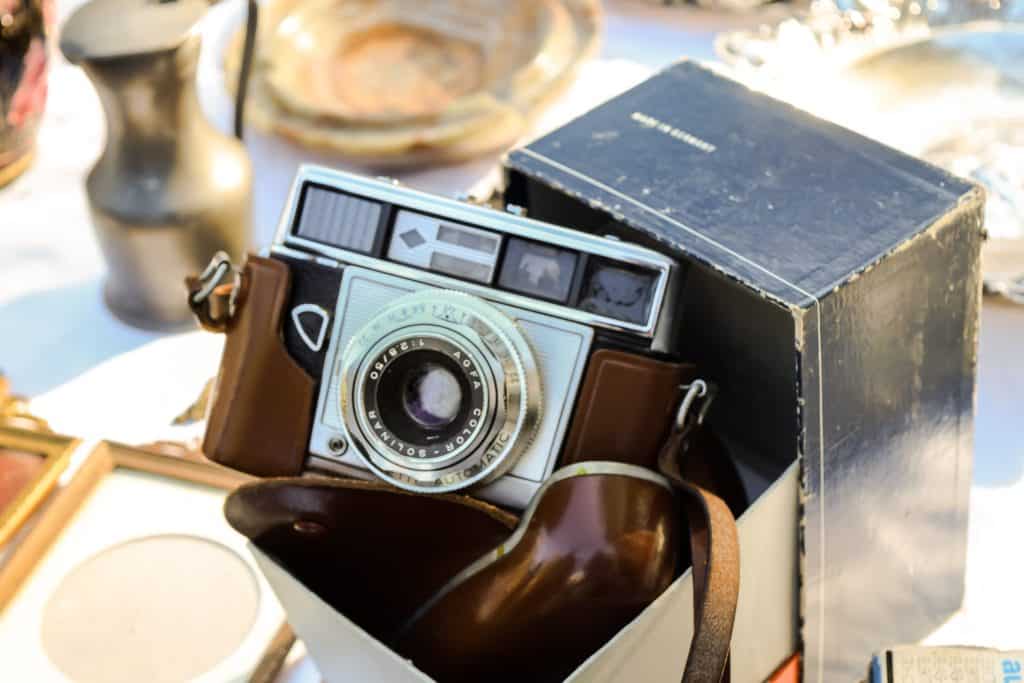
Wander Magical Market Streets
Find your rare gem, according to you, at one of the many ‘Les puces de Paris’—the fleas of Paris—or in layman’s terms, flea markets. With their ‘Je ne sais quoi,’ the French are not into dressing like worldly doppelgangers and frequent markets to create their individual style. There’s an eclectic wealth of bric-a-brac to sort through with some markets specializing in fresh food produce grown by the farmers with their own stalls. Paris is literally awash in markets to explore, whether it is clothes, antiques, or something to gobble down when you are hungry.
The real Paris is found in the market streets such as Rue des Martyrs located near Montmartre in the 9th arrondissement. A market for over 200 years with everything from fish to fruit, pastry shops that will have you salivating, hip boutiques, and chocolatiers to make you swoon in delight. Another not to miss is in the 7th arrondissement, Rue Cler, where it’s also possible to shop for a veritable feast. Here, people-watching has reached new heights while sipping espresso in an outdoor cafe.
If you really like to stumble your way around, head to Porte de Clignancourt (Les Puces de Saint-Ouen), simply known as ‘The Fleas’ in the 18th arrondissement. Covering 7 hectares of goodies to delight you, it has the largest antique market in the world. Most weekends see over 120,000 shoppers, voyeurs, and bargain hunters lurking around its stalls.
Do be aware of pickpockets at any flea market and ensure that you check your change when paying for goods. If you are not confident about navigating the flea markets alone, there are tours on offer with prices starting from €30.
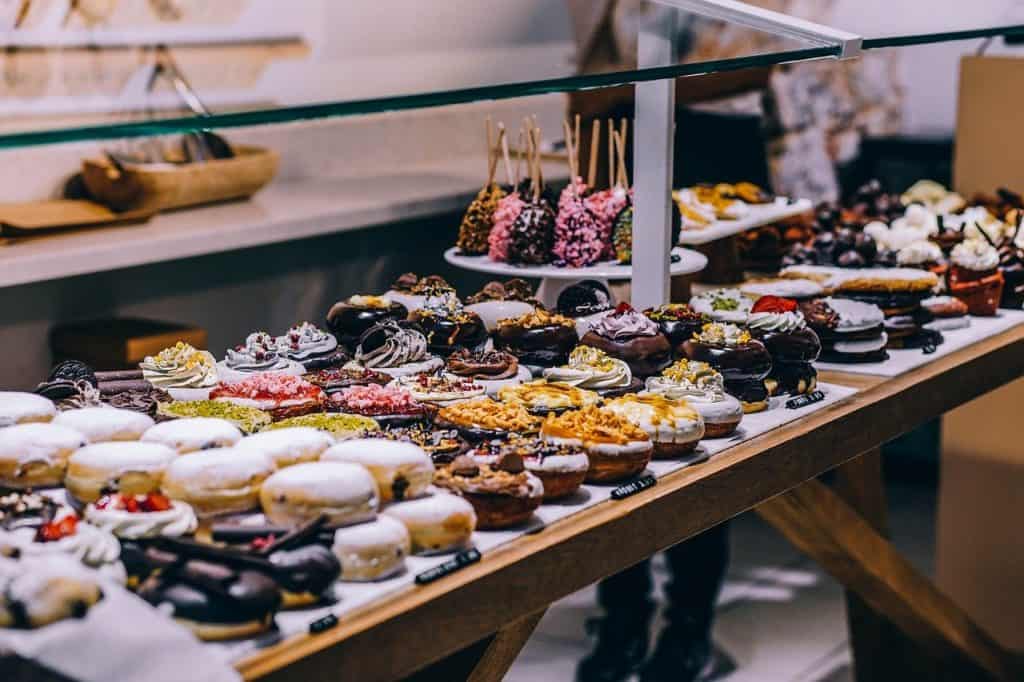
Have a Sugar Hit on a Chocolate Crawl
Head to the Left Bank of the 6th arrondissement and the charming hub of Saint Germain des Pres—this is where chocoholics go to gorge. You can literally get high on the cocoa aromas while meandering the streets where over 20 world-class chocolatiers have set up shop. It’s a moving feast of scented truffles, pralines, creamy ganache, liqueur-filled bonbons, and every other concoction of chocolate that you can imagine. Your senses will be thrown into overdrive when your eyes happen upon chocolate sculptures that beg to be slowly licked. Sweet, sour, bitter, and salty—it’s chocolate-tasting central. This is what I call ‘food for the soul.’
Saint Germain des Pres bursts with markets, pretty cafe-lined streets, fine food shops and restaurants. It was once a tiny medieval village centered around the oldest church in Paris. I would sit and imagine the likes of Pablo Picasso, who was a frequent visitor to this literary and artistic enclave, sitting beside me while I sipped my espresso. So many of the greats, such as Simone de Beauvoir and Boris Vian, mingled with other writers, painters, musicians, and sculptors in this unique space of Paris with shopfronts both quirky and eclectic.
You can take a walking tour for the dedicated chocolate lover complete with plenty of tastings—prices start at €99.
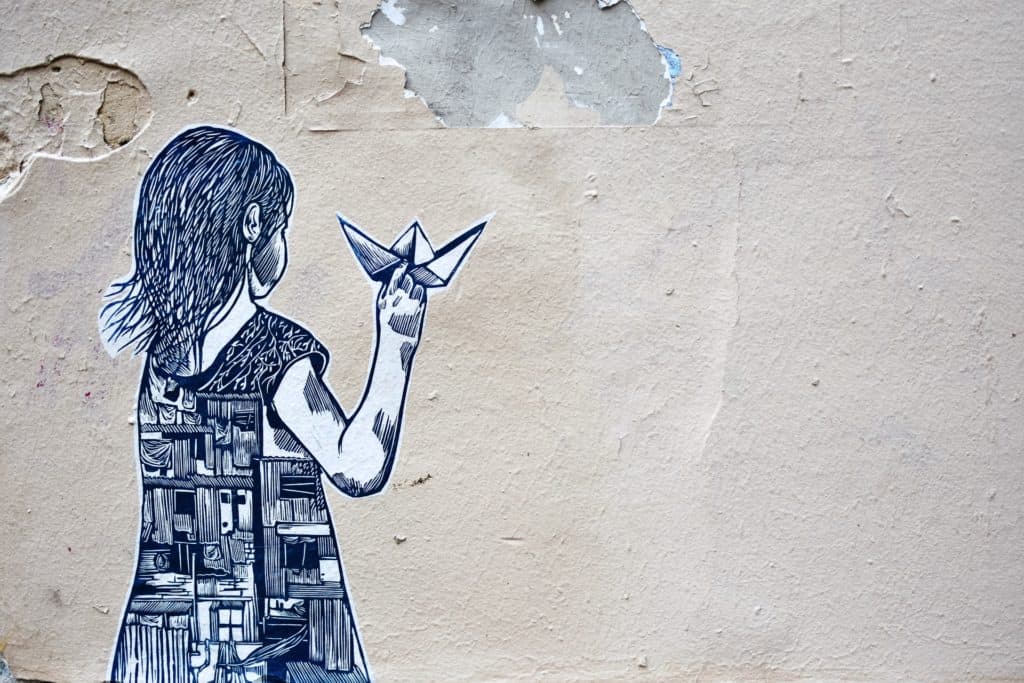
Hunt for the Street Art of Paris
Finding the street art of Paris is like going on a treasure hunt. Being a photographer, my favorite time of the day was early in the morning. The tourist hordes wouldn’t disrupt the view of an eye-popping vision created by one of Paris’ incredible street artists. I am not talking ugly graffiti, but fantastic paintings of social or cultural nuances reflected in colorful splashes on walls humming with creativity. Paris’ love of street art began in the 1970s and has become a significant part of the city’s landscape.
Of course, the world-famous ‘Banksy’ captures the day’s politics in his typical minimalistic stencils imbued with his ironic humor. Paris’ well-known ‘Invader’ makes his mark with video-game-inspired mosaics. ‘JR’ mixes street art with photography in his enormous black and white portraits on buildings worldwide and in Paris his project on the Pantheon. This one has to be seen. The artist ‘Kraken’ only paints in black. His squirmy octopus can be found on numerous streets and down cobblestone alleys. For a touch of Mexican and vivid colors, ‘Kashink’ typically depicts androgynous characters challenging the ideas about gender and identity.
It’s free to walk around the streets, and if you have the time as I did, it’s a great time waster. For those with limited time, you can take a tour with prices beginning at €15.
If it’s too cold to meander the streets, then head to one of the street art museums such as Art42, La Fab, or Fluctuart, which is actually a boat with a difference.
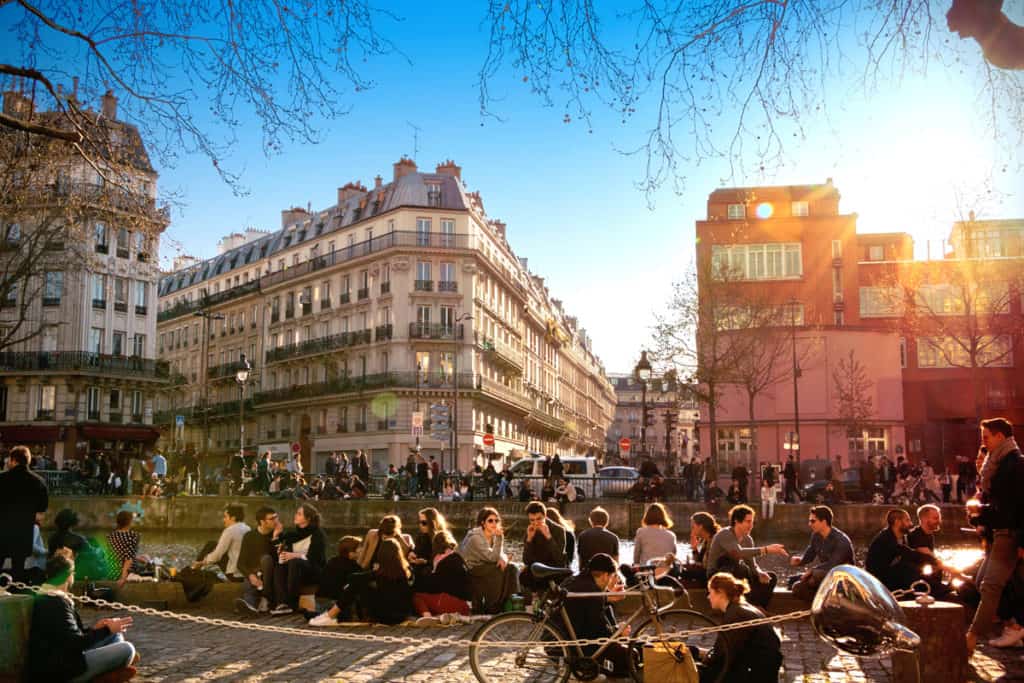
Explore Canal Saint-Martin: the Real Paris
Don’t miss out on visiting the 10th arrondissement for its bohemian air that will have you sculling back a craft beer, poking your nose into eclectic boutiques, or lingering in bustling cafes. Once a derelict district, it’s been gentrified without losing its charming bourgeois appeal. More a locals’ hangout area, rather than a tourist hot-spot, Canal Saint-Martin is a long canal connecting Canal de l’Ourcq to the River Seine.
Ride on a barge plying the canal or picnic on the riverbanks after gathering a feast of French goodies from the gourmet shops. Sit under ancient trees and swing your legs over the edge of the water as barges chug by. Or, head to Hôtel du Nord for a drink in its stunning garden.
I first went to Canal Saint-Martin to find the massive street art murals created by numerous artists on abandoned industrial sites and iron bridges. It was so enchanting and an escape from the tourist turmoil that I lingered around for the day in this unconventional space where fishermen line the shady banks. From Tuesday to Saturday, an old covered market that began in 1854 sets up in a chaotic display of people and produce—the perfect place to stock up on edible delights from hams and sausages to cheeses and fresh fruit while people-watching.
Take a deep breath as you walk around the flowers in Le Jardin Villemin. A lush park perched on the banks of the canal with plenty of bench seating for when your legs have had enough.

Visit Fashionable Le Marais
Le Marais is a former aristocratic enclave that now overflows with trendy boutiques, elegant arcades, historic mansions, galleries, and contemporary gay bars. The neighborhood also has a vibrant outdoor market, Marché des Enfants, that shouldn’t be missed.
An area of Paris that covers parts of the 3rd and 4th arrondissements, it was also once the city’s Jewish Quarter, so you will find plenty of kosher restaurants in the streets. This is home to the famous falafel restaurant, L’As du Falafel, that won’t cost you a fortune but will have you standing in a long queue at the door. Kosher delis and bakeries line the old narrow streets of Le Marais, where window-shopping for food can fill in hours. Or, you can literally eat your way through the arrondissement. Pop into quaint tearooms, scoff crepes street side, or gaze over rooftops sitting in a bar sipping an exquisite cocktail. An excellent venue for this is Le Mary Celeste, where oysters and tapas go hand in hand with each sip of a drink. Ensure that you make a beeline for the ultimate in macaroons found in the whole of Paris at Ladurée sitting on Rue Royale, where over 15,000 of them are sold per day. It’s possible to do a tasting-walking tour of Le Marais if you think you may get lost or miss out on some crucial mouthful, with prices starting at €123.65.
I would always poke my nose into the Maison Européenne de la Photographie to see what fascinating exhibition may be on display. Afterward, I would aimlessly wander the 19th century covered passages appreciating the wrought iron detail of the incredible vaulted ceilings of glass. There are plenty of eclectic shops hidden within these arcades to investigate, from antique book dealers to fabulous art galleries. The best streets for a bit of retail therapy include Rue des Francs-Bourgeois and the Rue Vielle du Temple.
When you are over your shopping blitz, put your rear end down on a bench seat under the old chestnut trees of Place de Vosges and watch the passing parade.

The Latin Quarter
To me, the Latin Quarter is the epitome of what Paris is all about. Its ancient cobblestone alleys and streets are a wonderland to explore. This is what medieval Paris would have been like.
Traditionally this arrondissement was the hallowed enclave for learning, for writers and intellectual souls. It’s home to Sorbonne University, with a campus framed by lime trees and dotted with fountains. It’s easy to imagine that in the past cloaked scholars with serious faces gathered in random groups on outdoor cafe terraces chatting in Latin while sipping aniseed-flavored pastis. The university vibe permeates the entire neighborhood with an infectious youthful vitality in contrast to its somber and historical significance.
During the bohemian era of the 1920s and 1930s, numerous famous writers such as F. Scott Fitzgerald and Ernest Hemingway would debate ad nauseam while sitting at La Closerie des Lilas Cafe. Today the cafe is a bit posher than when Hemingway would have claimed a chair, but it’s worthwhile taking a seat in the cafe just because of this fact. Alleys run in a maze hiding musty bookshops with random book displays virtually spilling onto the walkway, and the aroma of just brewed coffee wafts on the air. The Latin Quarter is an avid reader’s dream destination. I always took my time in the iconic Shakespeare and Co. bookshop with its jumble of uneven shelving and tables piled high with new and classic books. If you are lucky, you may just be there when a guest writer is speaking. There are books in English, so if you can’t read French, don’t fret. The Abbey Bookshop is another bookworm paradise with over 35,000 works in English and quirky reading nooks to take your time browsing over titles.
Tourists flock here for the stately sight of the Pantheon and linger in the beautiful Luxembourg Gardens that perch on the border with Saint-Germain-des-Prés. Lawn chairs dot the grass where impromptu picnics are in full swing. Children rush madly around the playground where the city’s oldest merry-go-round still cranks out its magical musical tune. The arty crowd can be found watching a movie in an art-house cinema.

Get a Little Lost in Île Saint-Louis
I’ve mentioned that I have no sense of direction whatsoever, so I am constantly getting lost. The delight of Ile Saint-Louis is that it’s only eleven hectares in size, and losing your way amidst its narrow lanes and cobblestone streets is sheer bliss. This historic area sits on one of the two islands in the hub of Paris. Ile Saint-Louis felt like its frozen in the 17th century. The Latin Quarter is connected to the bedlam of Paris by four bridges to both banks of the Seine.
Resembling a small French village in the heart of Paris, this charming nook of tranquility is easy to escape to after visiting Notre Dame Cathedral or the Centre Georges Pompidou nearby. The locals go about their daily lives ducking into bakeries or chatting with neighbors in the middle of lanes. Flirting lovers hold hands while strolling, and well-turned-out waiters slowly amble around terrace tables. The busiest place you will find is the famous ice-cream maker’s domain, Berthillon. You can lick your way through 90 flavors of ice cream and sorbet that will make your knees go weak in appreciation. Think white chocolate, dark chocolate, mango and wild strawberry. No dribble will escape your licking tongue.
Street performers hang out in the hope of a coin being thrown into a hat on the bridge connecting Ile Saint-Louis to Ile de la Cité. You can have a chuckle at mime artists, watch outlandish jugglers or listen to some jazz music for hours on end. Window-shop, or if you dare open the door, and enter a world of chic boutique clothes that you won’t find anywhere else in Paris. Every conceivable French contrived souvenir, from hand-crafted puppets to gourmet goodies, is done up ready for you to take home. My favorite place to walk into was L’ile Aux Images, where you can pick up a vintage lithograph or photo of Paris.
Stop off for a drink at Au Franc Pinot for a hefty dose of French laissez-fair without the tourist rip-off vibes, or head to one of the many cute classical bistros or brasseries hugging corner alcoves such as Brasserie de l’Île St-Louis. At some point, you have to splurge on an authentic Parisian dining experience. Wine in carafes, a frisée salad with a warm poached egg and bacon with a side-dish of crispy fries followed by chocolate mousse that you will dream about long after that last spoonful.
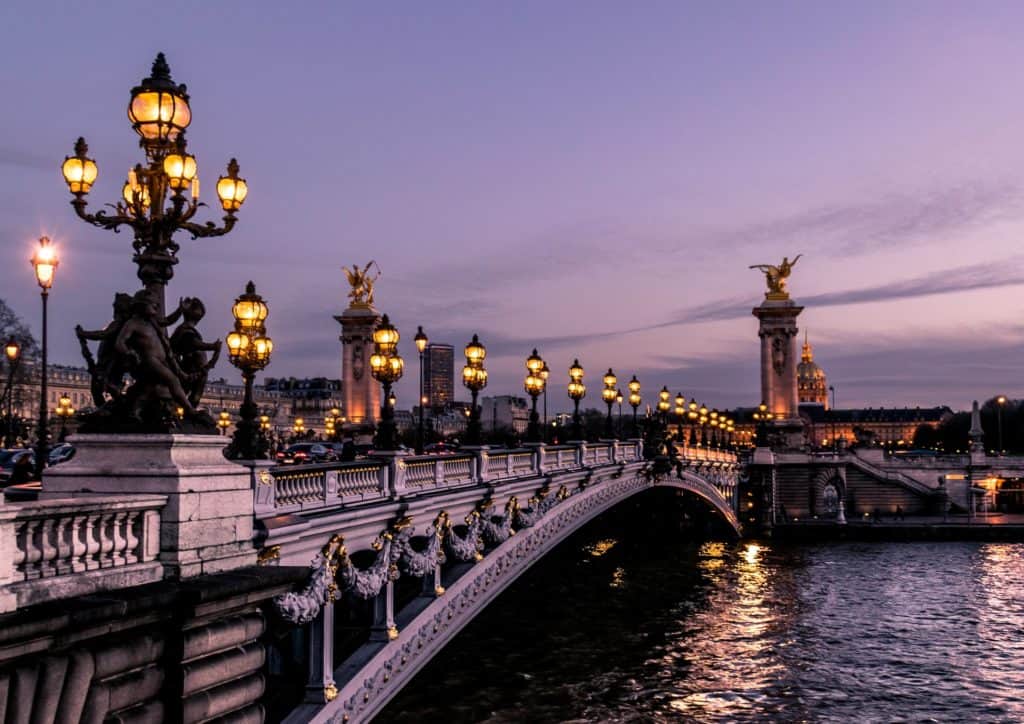
My tip is to let Paris seduce you. Lovers can chase the romantic spots like cruising the Seine at night without having to stand in a queue of boisterous tourists at yet another declared must-see architectural wonder. Families can roam the Natural History Museum and run wild in stunning parklands. History and art buffs can leisurely stroll through world-famous art galleries and gawk at iconic landmarks. A girls’ getaway could be spent dawdling from one shop to the next, ogling the latest haute couture, or lingering in a boutique perfumery. The foodie will be totally overwhelmed with 94 Michelin star restaurants, a mindboggling array of food providores, and fresh markets that have been doing business for eons.
Make the ‘City of Lights’ your own, no matter how many days you have in Paris.
Related Articles on France
💰 The Cost of Travel in Paris: A 2023 Budget Breakdown
🏖 Top Things to Do in Nice
⚛️ A Private Tour of CERN’s Large Hadron Collider

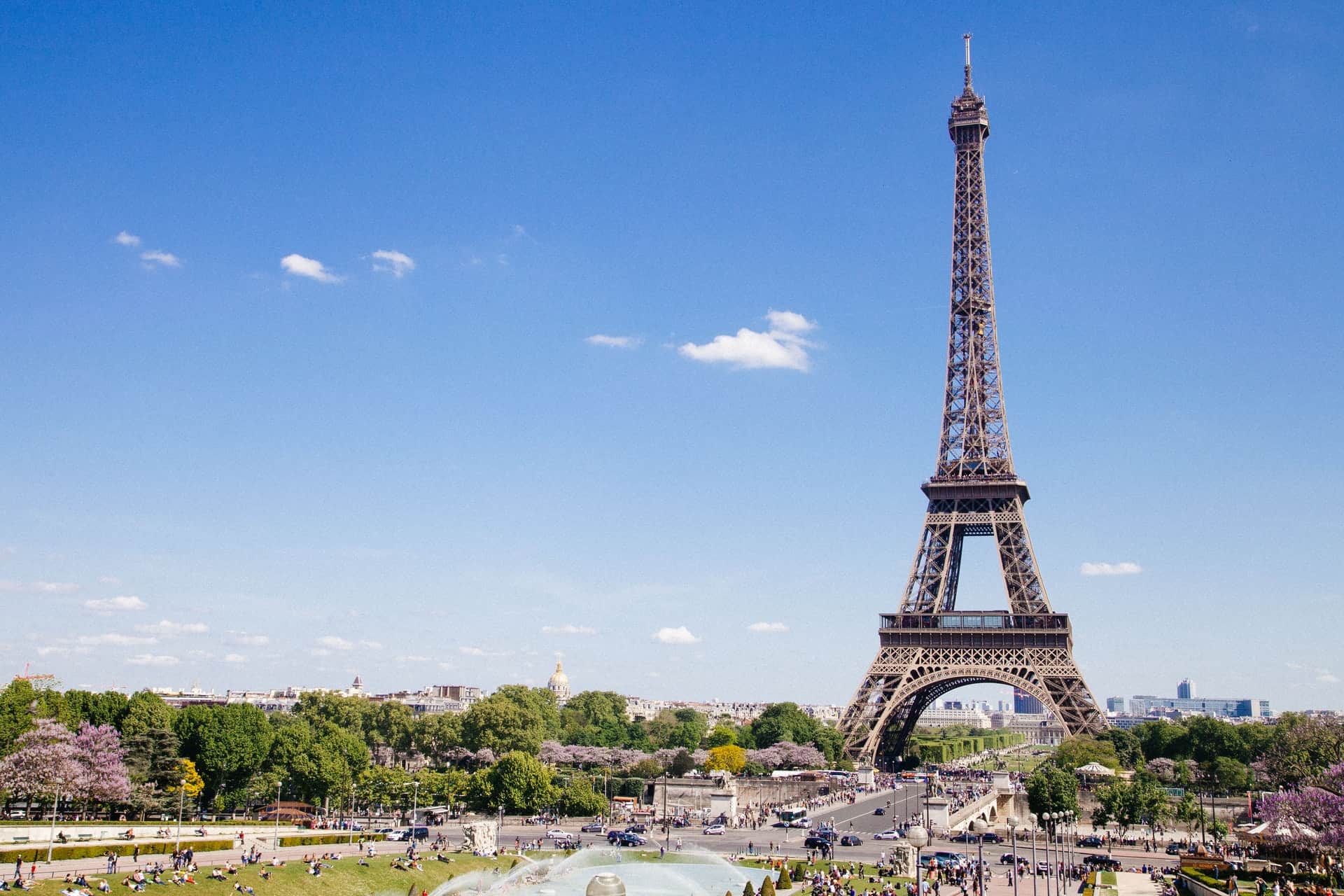




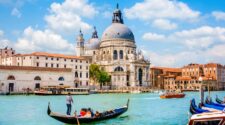

No Comment